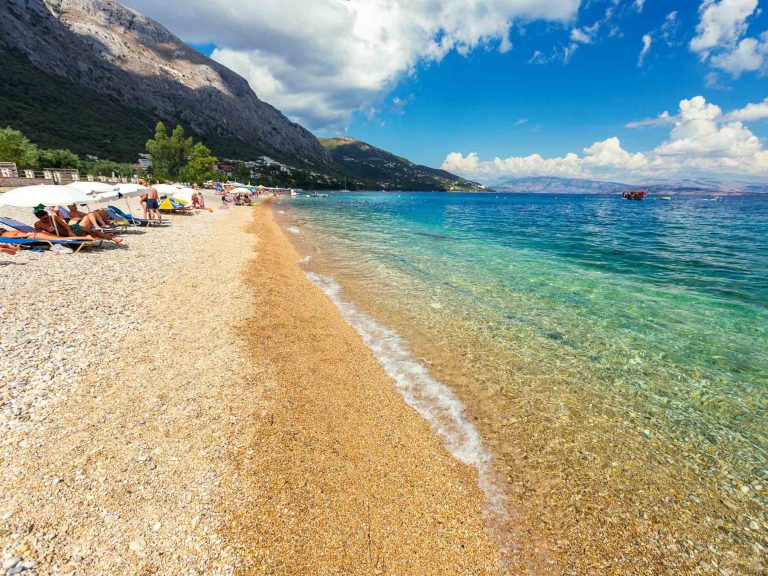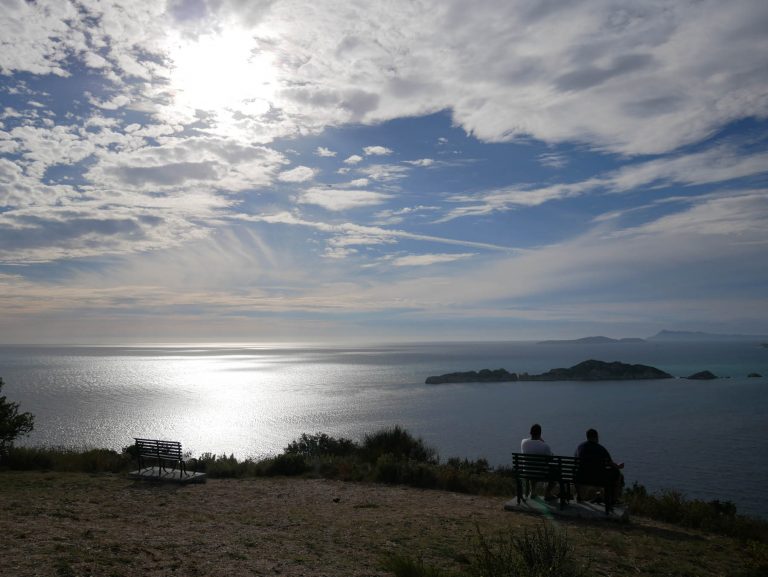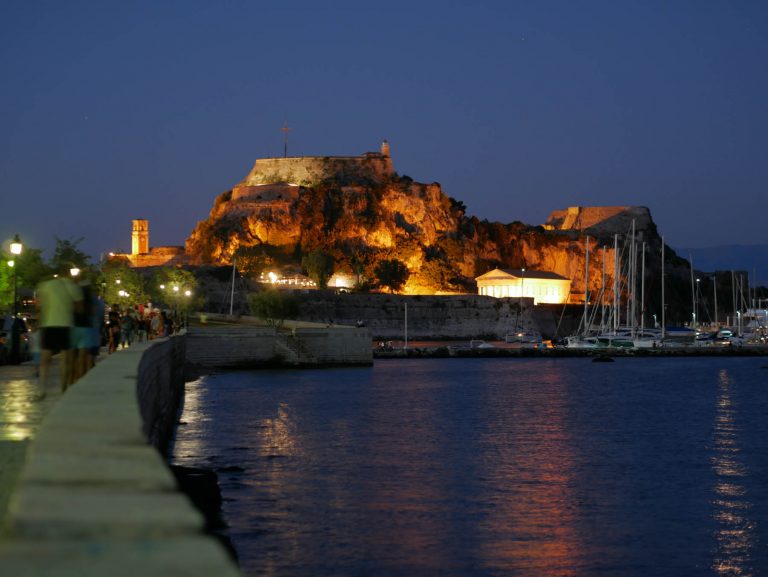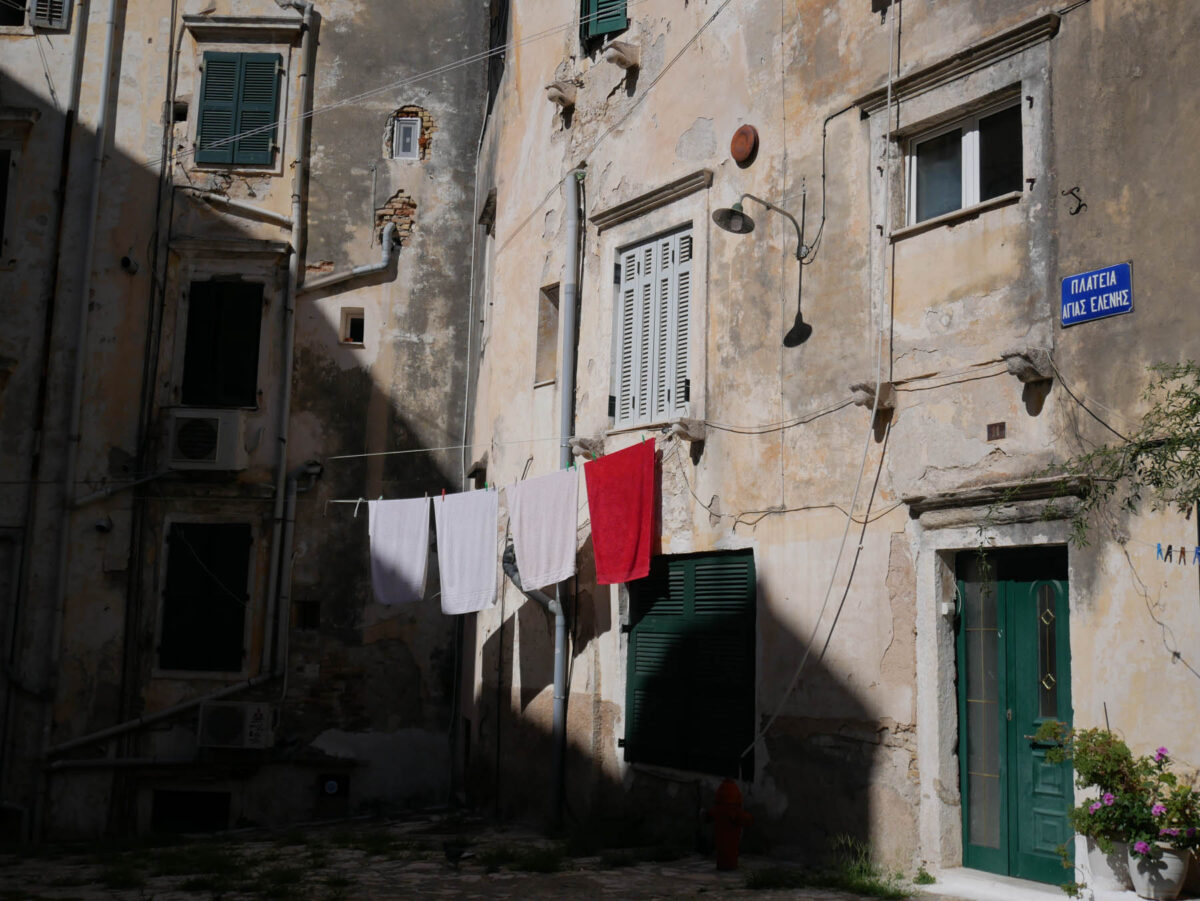interviews
Konstantinos Tsoumanis
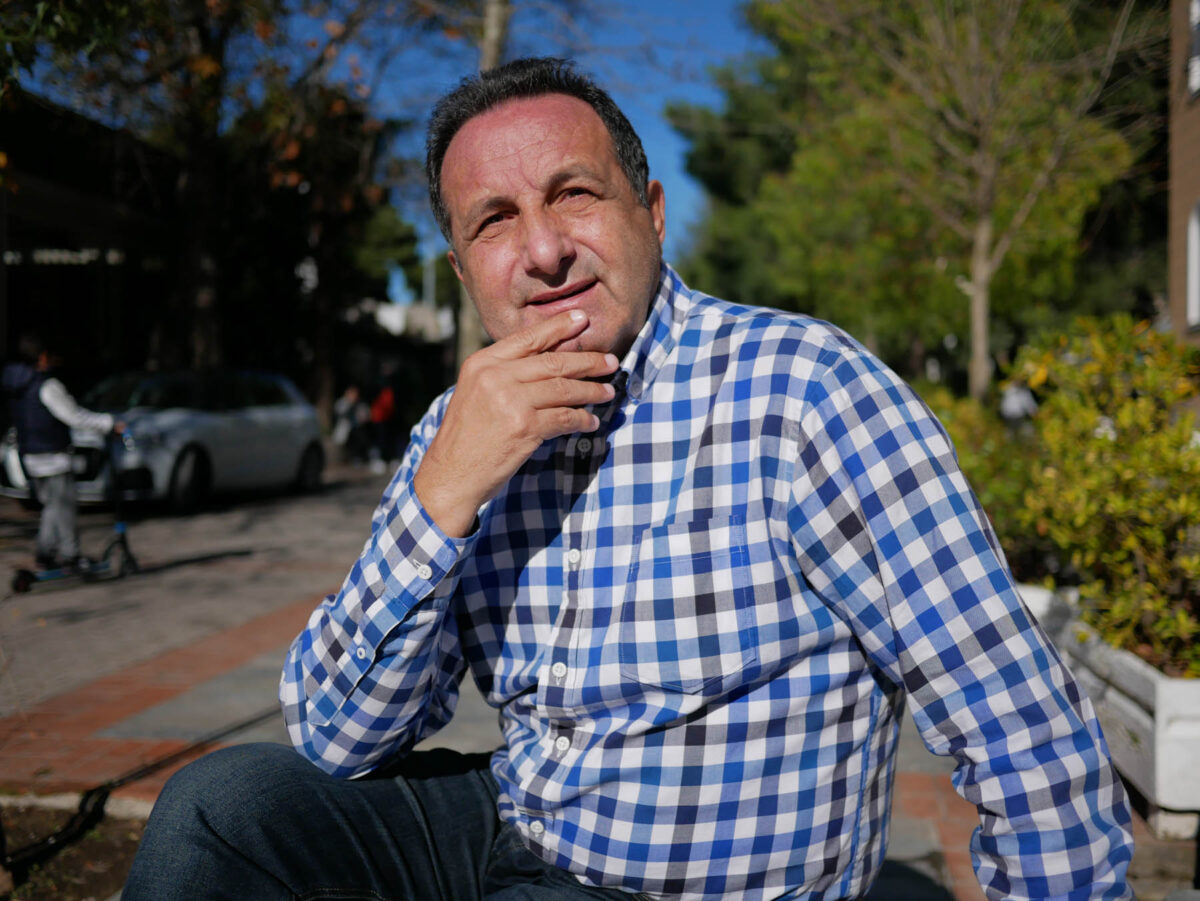
Reviving Homer’s hospitality
Konstantinos Tsoumanis skillfully juggles a diverse array of roles with the dexterity of a seasoned performer: he is a researcher, a traveler, an author, a collector, a proud Corfiot, and, above all, a person enamored with life. The question arises: is it possible to fit all these cards into a single sleeve?
As an academic professor specializing in tourism economics, Dr. Tsoumanis actively shapes policies at the Regional Tourism Organization of the Ionian Islands, concurrently contributing to the academic realm with research papers focused on the tourism development of Corfu. His extensive exploration spans several years, during which he delved into the travel notes of the island’s visitors from the Middle Ages to the present day. Compiling these insightful observations, he authored a captivating book titled “Corfu through the Eyes of Its Travelers.”
In this literary work, pilgrims, diplomats, historians, and poets have left perceptive remarks about the island and its people. In a conversation with my guest, we explored the enduring character traits that have withstood the test of time and become intrinsic to the Corfiot DNA. These include their playful spirit, a penchant for spectacular celebrations, and, of course, their timeless devotion to music.
Dr. Tsoumanis seamlessly combines the analytical mind of a dedicated researcher with the curious spirit of a treasure-hunter. His travels have not only enriched his scholarly pursuits but also resulted in a remarkable collection of travel publications and memorabilia, akin to a museum display. Currently immersed in the creation of his second book—a two-volume study on the evolution of tourism in Corfu from 1820 to the post-Covid era—he is already sketching the outlines of a third publication.
In his book, he eloquently states, “And the trip goes on, as long as there are limits that the man wants to exceed.” Intrigued, I pondered: amid his studies, writing endeavors, travels, and collections, what are the limits of his journey that he is determined to surpass? With a glint in his eyes, he shares his dream: “My dream is to see Corfu become the Mecca of hospitality.” He extols the spirit of hospitality found in Homer’s tales, particularly in the mythical Phaeacia, Corfu’s counterpart. This ancient generosity, exemplified by the treatment of Ulysses and his shipwrecked sailors on the shores of Paleokastritsa, serves as a guiding principle. Dr. Tsoumanis dedicates his efforts to assisting entrepreneurs in upholding the legacy of their Phaeacian ancestors.
I wish there was a magic way for all visitors to have a tour guide like Konstantinos Tsoumanis. It’s not just the stories one can learn from him; it’s his self-drive and bracing panache; and the motivation -coming from someone who enjoys life to the fullest- to keep searching for the true meaning of life and going after it.
Interview
Citimarks: Mr. Tsoumanis, you have long experience in the tourism industry in Europe. What is the most common mistake of the tourist entrepreneurs when providing their services to the travelers?
Konstantinos Tsoumanis: In destinations flooded with mass tourism, businesses frequently show reluctance to tailor their offerings to the specific needs of their clients. Regrettably, it is often the traveler who must make concessions due to the limited and standardized nature of services. Take, for instance, tourist-oriented restaurants; their menus tend to be rather uniform, relying on mediocre ingredients and lacking creativity to distinguish themselves from competitors. The same holds true for large resorts offering "all-inclusive" services; with tour operators guaranteeing a steady influx of visitors, there is a noticeable lack of effort to go the extra mile in ensuring guest satisfaction. The dynamics of mass tourism often work to the detriment of the very tourists it aims to attract.
What is the essence of “Homer’s hospitality” your books often refer to?
When Ulysses, the legendary hero of the Odyssey, landed on the shores of Phaeacia (note: the name of ancient Corfu), the islanders unknowingly welcomed him as if he were a king, not realizing he was already the ruler of Ithaca. The Phaeacians made Ulysses feel so at home that he chose to prolong his arduous journey and share tales of his adventures with the locals. In a similar vein, small tourist businesses today have the potential to emulate this personalized approach. They are well-positioned to offer a more tailored and intimate experience, leaving a distinctive and memorable imprint on the services they provide.
Do you have an example of a place where you have been received like a king?
Zagorochoria (note: a cluster of picturesque mountainous villages in northwest Greece) stands as a shining example of a more human and personalized service. In this picturesque region, the majority of businesses are small-scale. While the owners may lack extensive infrastructure or professional expertise, they compensate with the warmth of their hearts. Every visit feels like a return to family; their hospitality goes beyond transactional, with a personal touch in choosing local products and a genuine smile reserved for guests. The motivation and attentiveness displayed by these business owners are truly moving, encapsulating the essence of Homer's hospitality: welcoming guests with an open heart. I am wholeheartedly dedicated to channeling all my efforts into assisting entrepreneurs in preserving the legacy of their Phaeacian ancestors."
Your book “Corfu through the eyes of its travelers” collects travel notes dating from the Middle Ages through the 20th century. The reader can explore stories and impressions of travelers coming from different backgrounds and cultures: Italian pilgrims, French writers, English diplomats, Swiss writers. What brought all those people to Corfu?
In Corfu, during a time when travel guides were non-existent, the visitor's manual was the Homeric Odyssey. Armed with a copy, travelers sought out the locations where the most iconic episodes of the epic unfolded. The beach of Paleokastritsa, for instance, might not have gained as much renown if historians hadn't suggested it as the possible site where Ulysses and his shipwrecked crew were rescued by Nausicaa, the daughter of the island's king. This enduring desire to breathe life into inspiring myths continues to draw travelers to the island even in our contemporary era.
Some visitors stumbled upon Corfu without specific plans. En route to pilgrimage destinations like Jerusalem or Cappadocia, they found themselves making an unplanned 3 or 4-day stopover. The stay of Sissi, Empress of Austria, in Corfu, and the subsequent construction of a palace as her summer residence in 1899, played a pivotal role in transforming the island into a magnet for royalty and socialite writers. This historical connection has left an indelible mark on Corfu's allure.
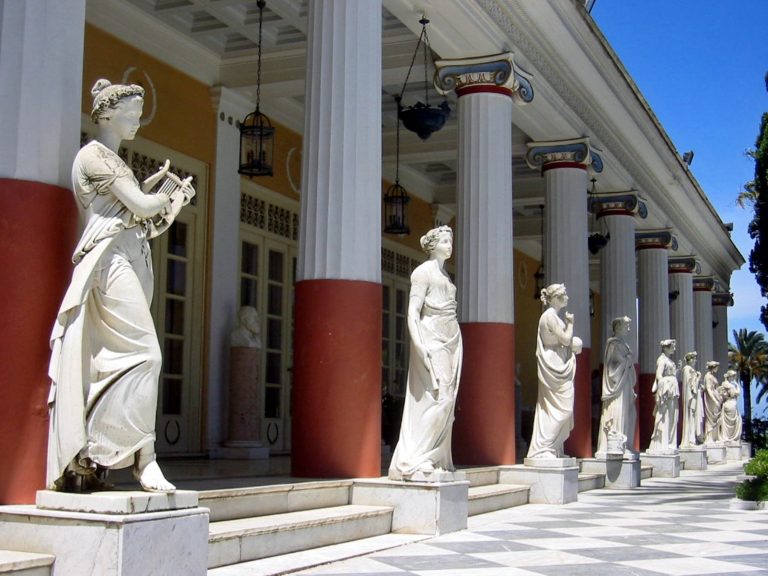
The splendid terrace of Achilleion, a palace that served as a summer residence to Sissi, Empress of Austria. © Thomas Schoch. Source: Wikipedia.

Romy and Magda Schneider in the film series “Sissi-The young Empress”, a big blockbuster of the ’50s. Source: Critique Film.
"This encapsulates the essence of Homer’s hospitality: welcoming guests with an open heart. I am wholeheartedly dedicated to channeling all my efforts into assisting entrepreneurs in preserving the legacy of their Phaeacian ancestors."
Many writers have observed the lifestyles, customs and mentality of the locals. What are their most recurrent remarks about Corfiot culture?
Indeed, travel literature possesses a unique capacity to impart knowledge about a place in ways that traditional textbooks cannot. By documenting their experiences with the local environment and its people, visitors have played a crucial role in shaping the historical narrative of a destination. Hailing from diverse countries and backgrounds, they often offer insightful perspectives on aspects of local culture that might not be as apparent to the inhabitants themselves.
In Corfu, visitors are almost universally struck by the distinctive character of the island, noting that life and its inhabitants bear a closer resemblance to the West than the East. This stark contrast with other regions of Greece becomes apparent in the absence of Oriental influences in the way Corfiots dress, speak, or behave. Instead, what astute observers were witnessing is a centuries-long, multicultural tapestry of people in constant flux—a dynamic blend of Venetians, French, English, Russians, Maltese, Jewish, Albanians, Turks, and others contributing to the island's unique cultural mosaic.
In 1879, French journalist Joseph Reinach suggested that Corfiots stand out for their kindness: “they are friendly, hospitable like their ancestors, the Phaeacians [...] and passionate like the Neapolitans” he wrote. Which traits draw the character of the contemporary Corfiot?
The behavior of Corfiots is marked by a distinct delicacy and tact, reflecting the enduring influence of the Venetians who governed the island for over four centuries. Sociable and extroverted, the Corfiot embodies an open spirit. Another defining characteristic is their appreciation for life's simple pleasures, evident in their love for good food, grand celebrations, playful moods, and, notably, their deep devotion to music.
Corfu has a rich tradition of organizing music concerts, theatrical performances, ceremonies, and parades to commemorate national holidays and local festivities. Music remains a fundamental part of everyday life. No Sunday gathering around a table is complete without guitars and singalongs. Children are enthusiastically enrolled in music schools and choirs, while public celebrations are invariably accompanied by one of the 17 philharmonic bands on the island. In Corfu, music education is not a privilege but a societal benefit accessible to every boy or girl, regardless of financial means. Witnessing grandparents, parents, and grandchildren playing together in the same band is a touching testament to the island's deep musical heritage.
The more I get to know the locals, the more I feel that this lighthearted, playful spirit is fundamental in the Corfiot DNA.
Certainly! On a daily basis, Corfiots find myriad occasions to express their vivacity and sense of fun. Teasing is a prime example of this lively spirit. They delight in good-naturedly poking fun at friends, neighbors, or anyone they feel close to. A stroll through the town's streets is likely to encounter groups of people erupting in laughter as they playfully tease each other. Visit the market, and you'll likely come across carriers or merchants serenading with tunes like "La donna è mobile" or other popular melodies while tending to their merchandise or opening their shops. For some, this joyful demeanor may be as simple as offering a warm smile to a complete stranger.


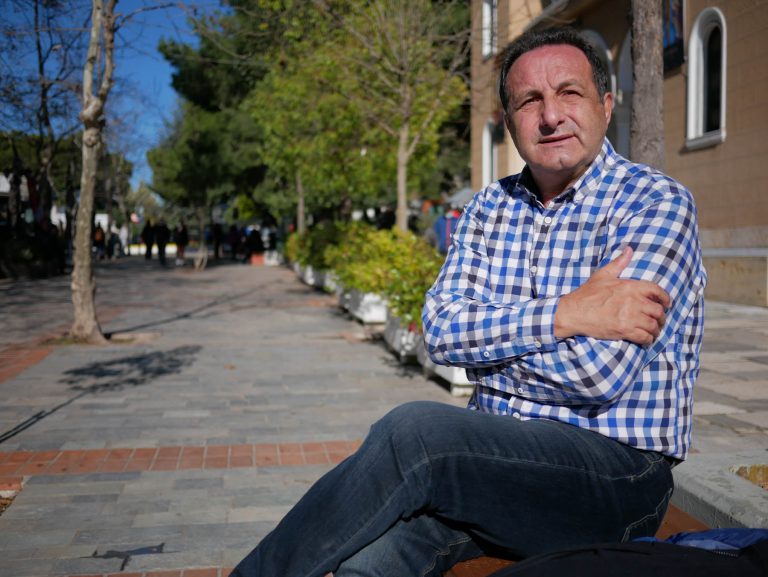
Cadavre Exquis
If Corfu were a song, what song would that be?
The aria of Figaro in Rossini's "The Barber of Seville" indeed captures the playful essence of the barber's character, and the lively, joyful vibe of the melody resonates with the spirit of Corfu. The mischievous and spirited nature of Figaro mirrors the vivacity and sense of fun that characterizes the Corfiot people. It's fascinating how music can evoke connections between different cultural expressions, highlighting the universal joy and playfulness found in both art and everyday life.
If Corfu were a film?
"Sissi - The Young Empress," featuring Romy Schneider, is a captivating movie series that chronicles the life of the 19th-century Austrian Empress Elisabeth, affectionately known as Sissi. The narrative takes an intriguing turn as the Empress, grappling with the potential threat of tuberculosis, embarks on a journey to Corfu, drawn by the promise of its warm climate for her recovery. The film beautifully captures her walks in some of the most idyllic settings, captivating the audience and underscoring Corfu's historical status as one of the favored leisure destinations for European royalty. The movie serves as a cinematic testament to the island's allure and its healing qualities, echoing through the footsteps of a celebrated Empress.
If it were a Corfiot dish?
The "Soffritto" is a noteworthy dish with a fascinating culinary history. Imported from Venice and seamlessly integrated into the local cuisine, it reflects the cultural fusion that often characterizes culinary traditions. The Soffritto consists of thinly sliced beef accompanied by a light sauce made from parsley, garlic, and white wine. Its delightful combination of flavors not only tantalizes the taste buds but also evokes the delicacy and politeness of the islanders. This dish stands as a testament to the rich tapestry of influences that have shaped Corfu's culinary landscape over the years.
If you could travel in time for one day, which century of the Corfiot history would you go back to and what would you like to discover?
Traveling back to the 15th century, when the Venetians erected defensive walls around the old fortress and fortified the islet of "Vidos" opposite the port of Corfu, would indeed provide a fascinating glimpse into an era of strategic construction. The Venetians, renowned as maritime superpowers, showcased their expertise through impressive defense structures designed to protect the island from pirate invasions. The historical records even allude to a network of underground galleries connecting the old fortress to the town center, adding an extra layer of intrigue to their defensive prowess. Witnessing the design process and execution of these remarkable works would undoubtedly be a thrilling and enlightening experience.
Which historical figure from the past would you like to meet?
I appreciate your admiration for the philhellenic efforts of Frederick North, 5th Earl of Guilford, a British politician. His significant contributions in 1824, during the period of British administration on the island, were instrumental in establishing the first university in modern Greece—the Ionian Academy. Hosting faculties of Arts, Law, and Medicine, the Academy played a pivotal role in fostering Greek studies at a time when Corfu was not yet part of Greece. It served as an academic hub, attracting students from across the country and contributing to the intellectual and educational development of the region. North's commitment to the Ionian Academy left a lasting legacy in the cultural and educational history of Corfu and Greece as a whole. (Note: a statue dedicated to Lord Guilford is located in “Boschetto”, at the edge of Spianada, in Corfu town.)
What is your favorite Corfiot word?
The term "gnoràntes," stemming from the Italian "ignorante," is a fascinating word in the local dialect. While in Italian, "ignorante" refers to an ignorant person, in Corfiot dialect, "gnoràntes" takes on a specific nuance. It describes an individual who lacks knowledge on a particular subject yet behaves as if they are well-versed in it. The Corfiots skillfully employ this pejorative term to humorously mock those who present themselves as experts despite their actual lack of expertise. It adds a touch of local flair to the universal experience of dealing with self-proclaimed know-it-alls.
24 hours in Corfu
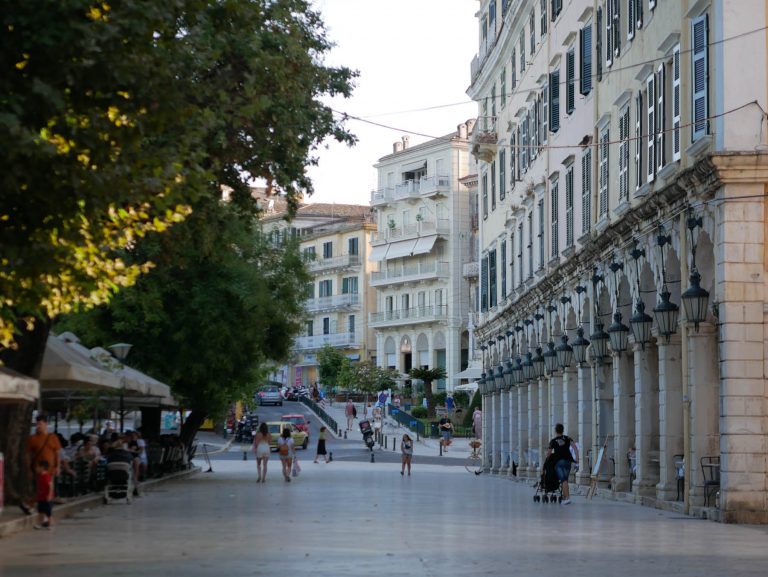
In the 19th century, the Liston Promenade was reserved to the noble residents of the island.

